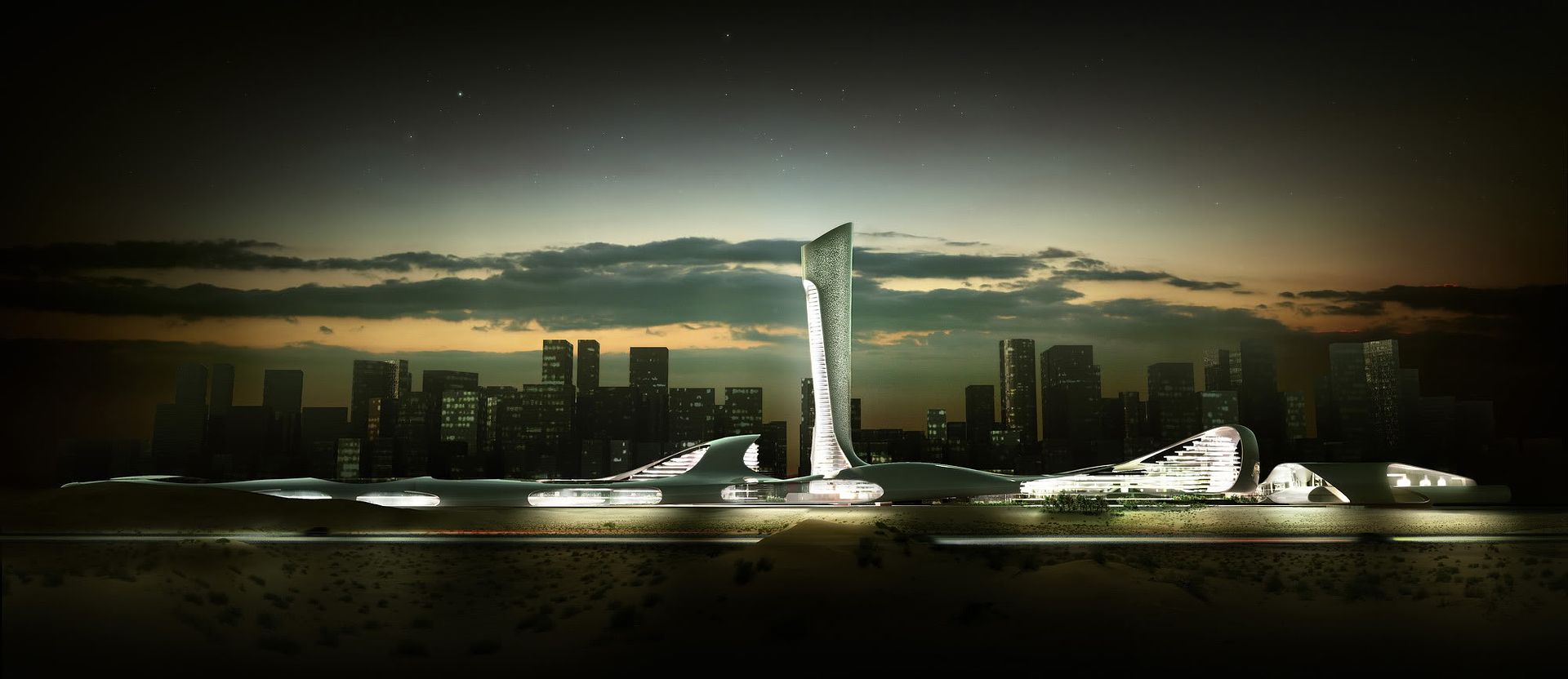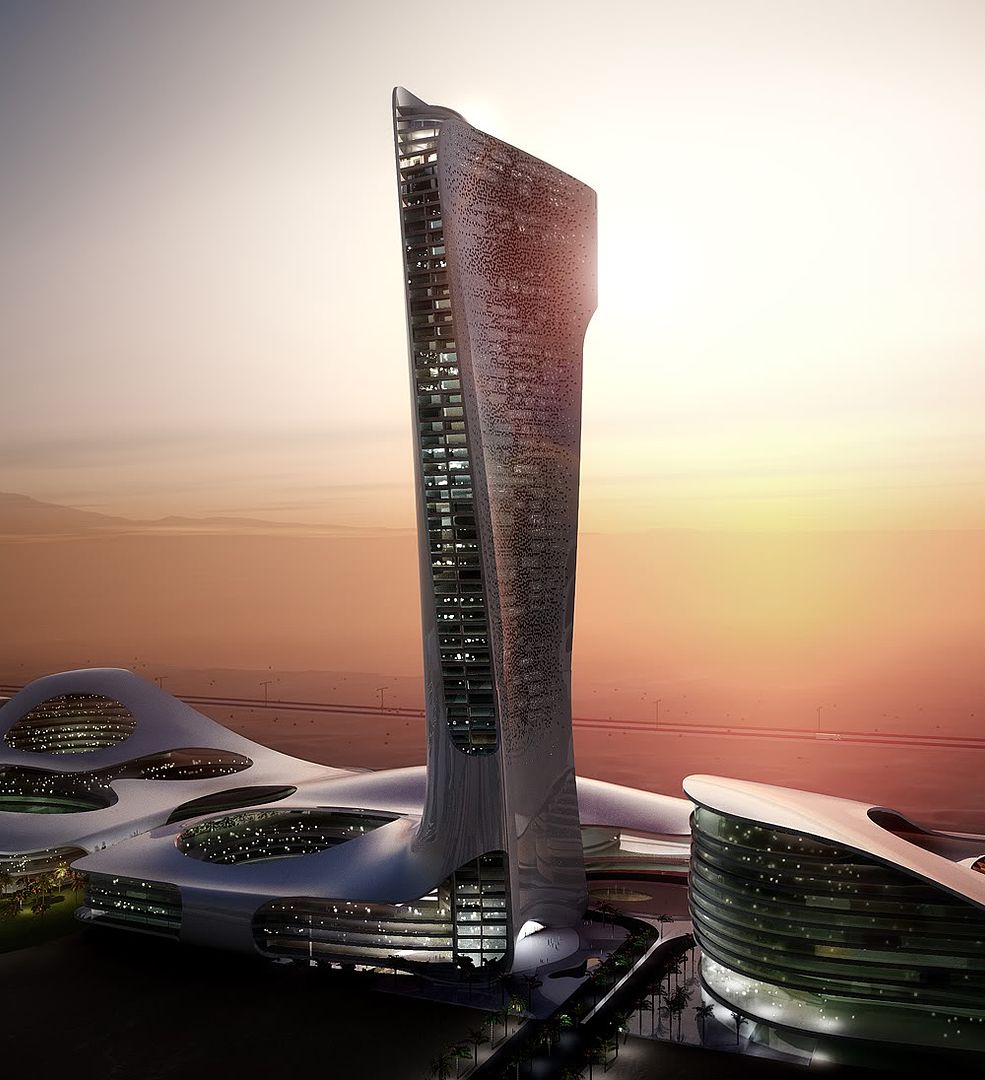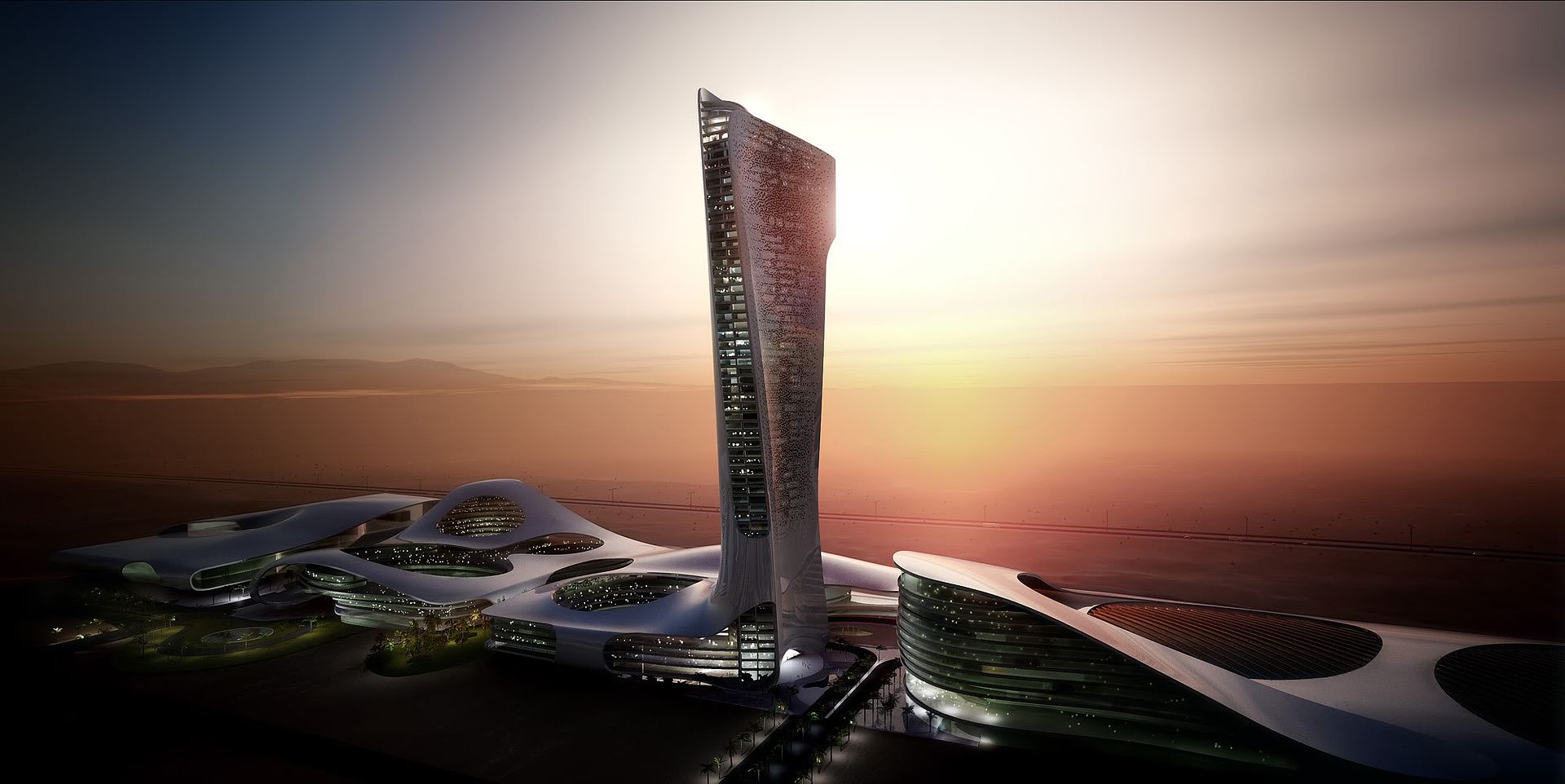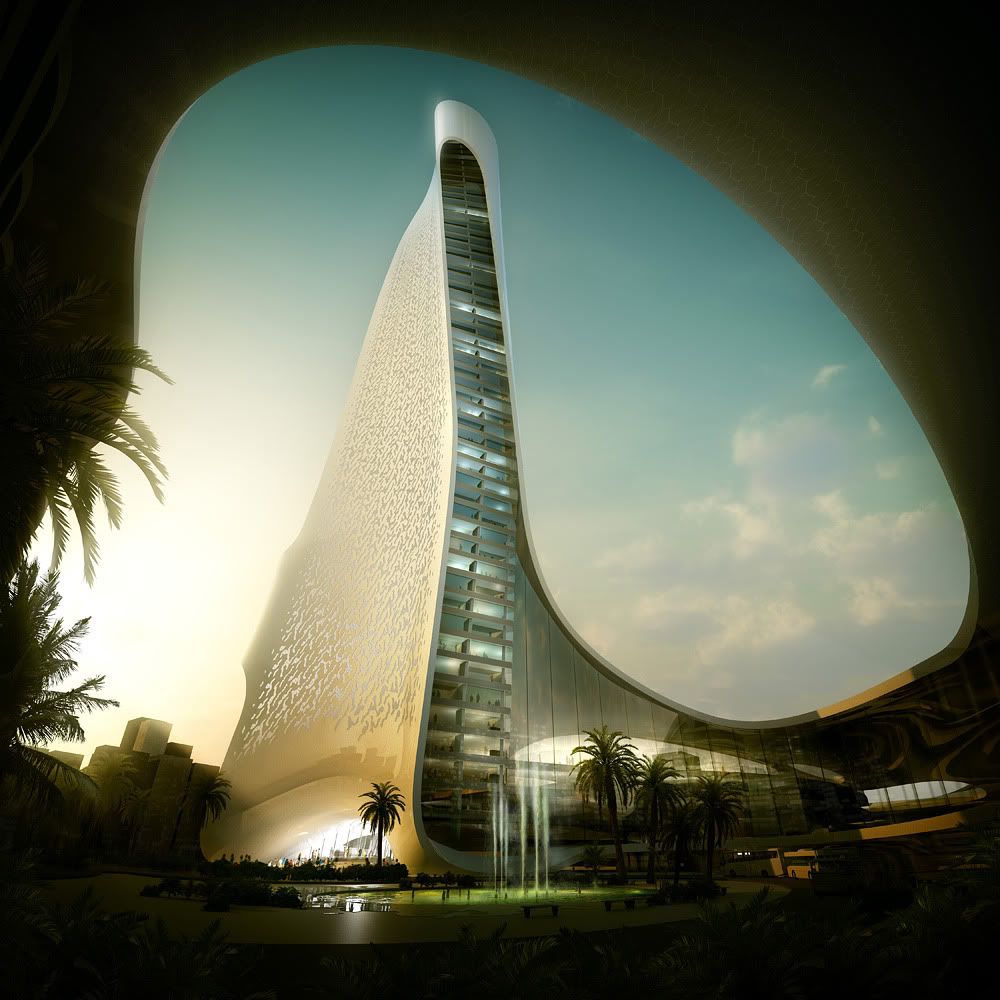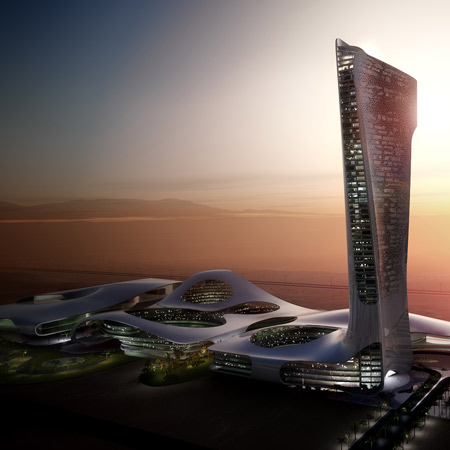
Here are some new images of a hotel, conference and exhibition complex by Norwegian architects Snøhetta, in the emirate of Ras Al-Khaimah, United Arab Emirates.
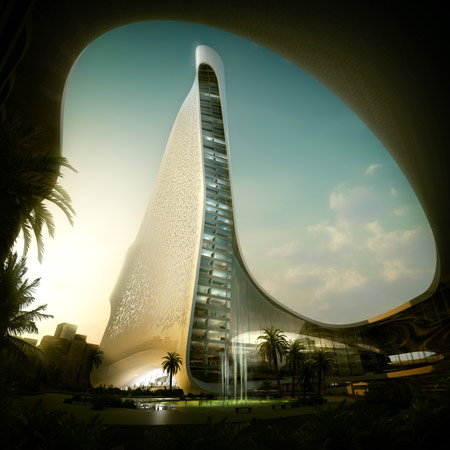
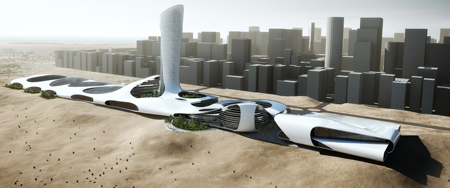
Snøhetta has been commissioned by the Ras Al Khaimah investment Authority and RAKEEN to undertake the architectural design for the Gateway project in the emirate of Ras Al Khaimah.
Situated in the desert 150 km to the east of Dubai this landmark project will mark the gateway to the emirate and form the entrance to the new planned capital city of Ras Al Khaimah.
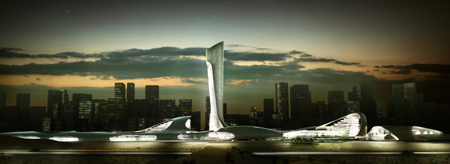
The urban master plan for the city is currently being under taken by the Netherlands based architectural practice OMA. The Gateway project is situated at the entrance to the city and will form a landmark for the city entrance.
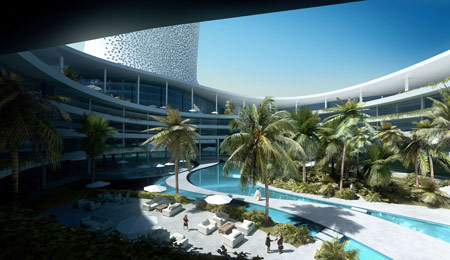
The architectural expression for the proposal is inspired by the surrounding desert and mountain landscape.
This concept provides for an infinite variety of naturally shaded, intimate and protected spaces, around which the multiple uses associated with the development are woven.
The undulating architectural landscape is resolved in a dramatic landmark tower marking the main gateway plaza.
This 200 m high tower will be the setting for a 5 star plus hotel affording panoramic views across the emirate, to the gulf and mountains beyond.
The programme calls for a mixed-use development comprising a conference centre, exhibition centre, hotels and retail space.
In total it is expected to be 270 000m2 of build area. In addition there will be substantial areas of associated garden and landscape.
Externally the building will be clad in ceramic panels, this will be developed together with Ras Al Khaimah ceramics, one of the world leading producers of ceramic products.
Ras Al Khaimah has been the site of human habitation for several millennia and there are many historical and archaeological sites throughout the emirate dating from different time periods, including remnants of the Umm Al Nar Civilisation (3rd Millennium BC).
The city was historically known as Julfar. Archaeological evidence has demonstrated that the settlement known as Julfar shifted location over time as harbour channels silted up.
Excavations of a sizable tell, which revealed remnants of a Sassanid Era fortification indicate that early Julfar was located in the Shamal area, not far from other sites of historical/archaeological interest such as Sheba's Palace and the largest Umm Al Nar tombs found on the Arabian Peninsula.
Sources say that Julfar was inhabited by the Azd (They were a branch of the Kahlan tribe, which was one of the two branches of Qahtan (the aboriginal Arabs), the other being Himyar.) during the eighth and ninth centuries AD, and that the houses of the Azd were built of wood.
In the early 18th century the Qawasim clan established itself in Ras al-Khaimah.
In the early 19th century a British naval force attacked and occupied Ras al Khaimah to put a stop to the powerful hold of the maritime powerful Quwasem tribe.
The Quwasem served as a threat to the British imperialism, and endangered the ships in the Indian Ocean.
After British occupation (18 December 1819 - July 1821), Sheikh Sultan bin Saqr al-Qasimi signed in 1822 the General Maritime Treaty with Britain, accepting a protectorate to keep the Ottoman Turks out. Like Ajman, Dubai, Umm al-Qaiwain and Sharjah, its position on the route to India made it important enough to be recognized as a salute state.
In 1869 Ras al-Khaimah became fully independent from neighbouring Sharjah. However from September 1900 to 7 July 1921 it was re-incorporated into Sharjah; the last governor became its next independent ruler.
On 11 February 1972, Ras Al Khaimah, under the leadership of Sheikh Saqr bin Muhammad al-Qasimi, joined the United Arab Emirates.
Ras al-Khaimah is not a major oil producer, so it has focussed on developing its industrial sector.
It opened the UAE's first cement company in the early 1970s and is now the UAE's largest producer of cement. In the 1980s, the emirate formed Ras al-Khaimah Ceramics, which has become the world's largest ceramics producer, and Gulf Pharmaceutical Industries (Julphar), the Persian Gulf region's first pharmaceuticals company. It is trying to emerge as an investment destination par excellence.
However it suffers from great electricity shortages, which has caused some residential buildings to be abandoned.
The annual Ras Al Khaimah Half Marathon, first held in 2007, has called the attention of the world's sporting media to the region.
The organisers invest much in the IAAF-label race in order to attract the world's top athletes, resulting in a world record from Samuel Wanjiru in 2007 and the second fastest run of all-time from Patrick Makau Musyoki in 2009
